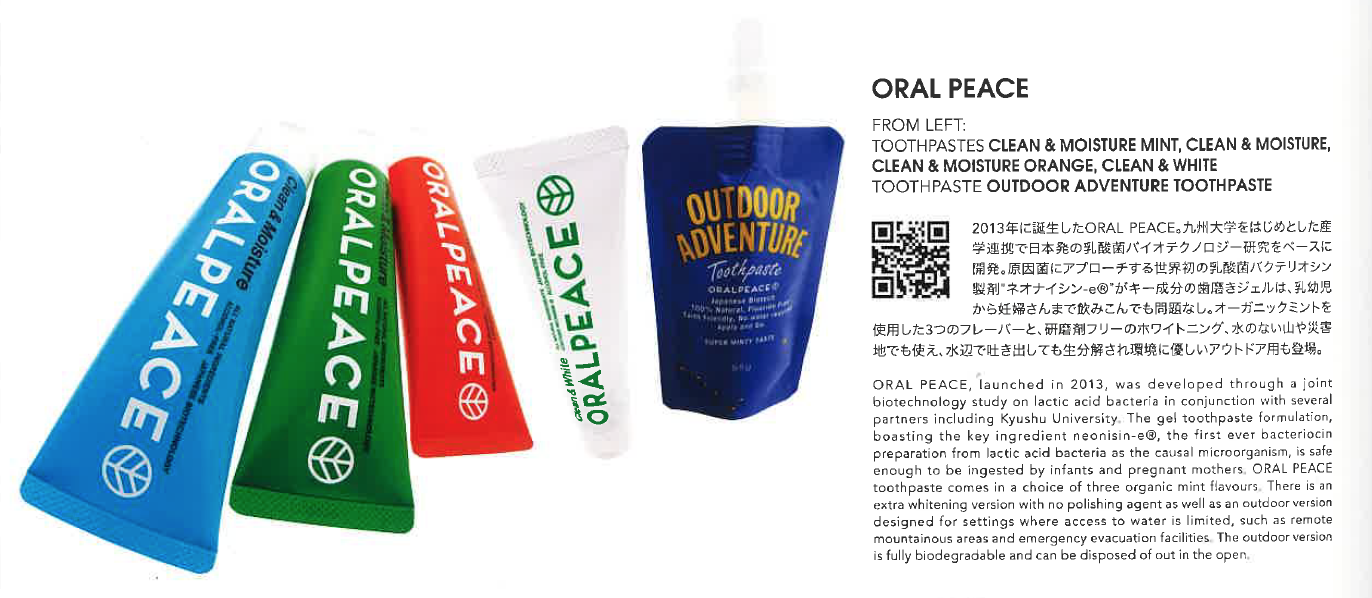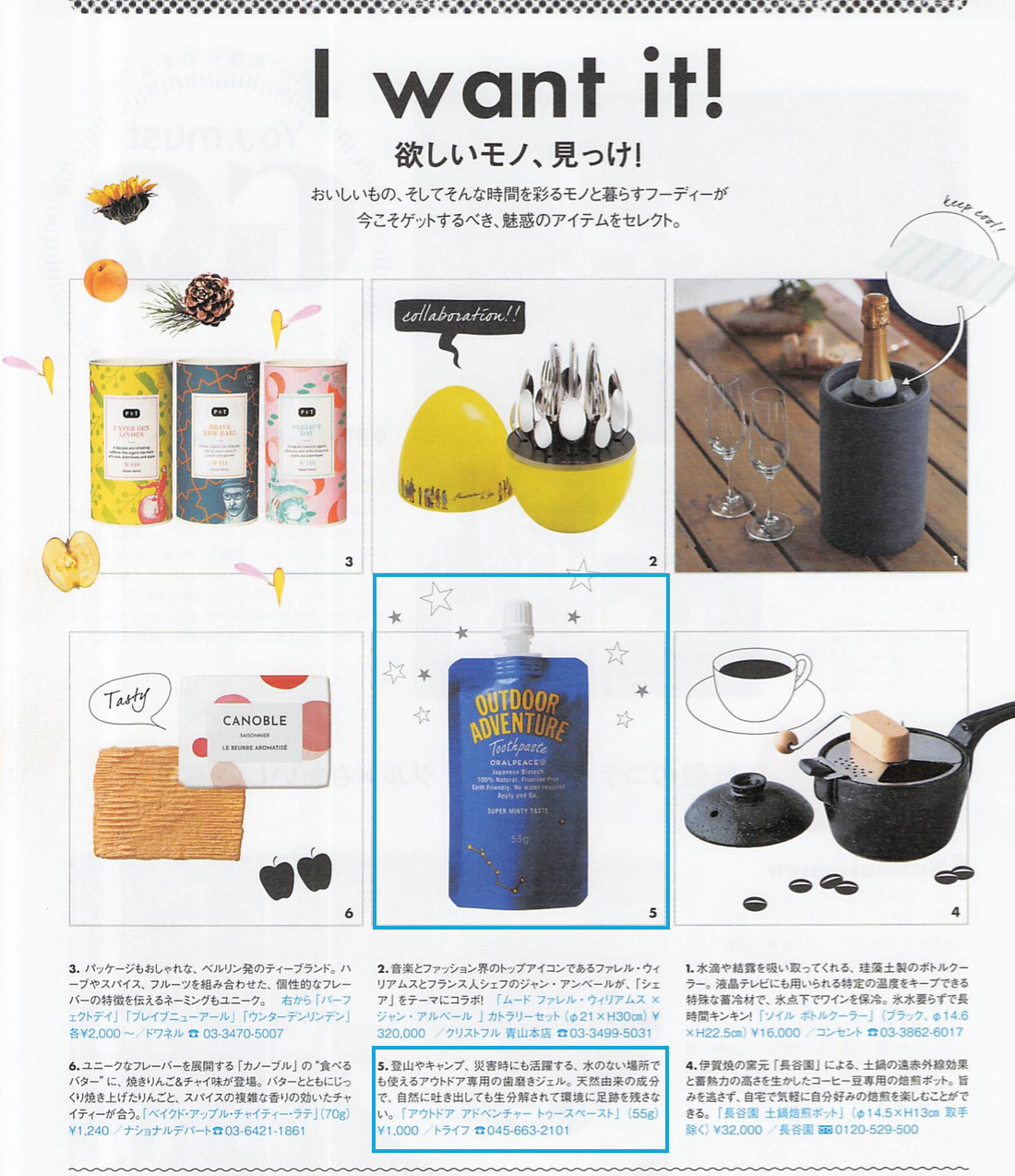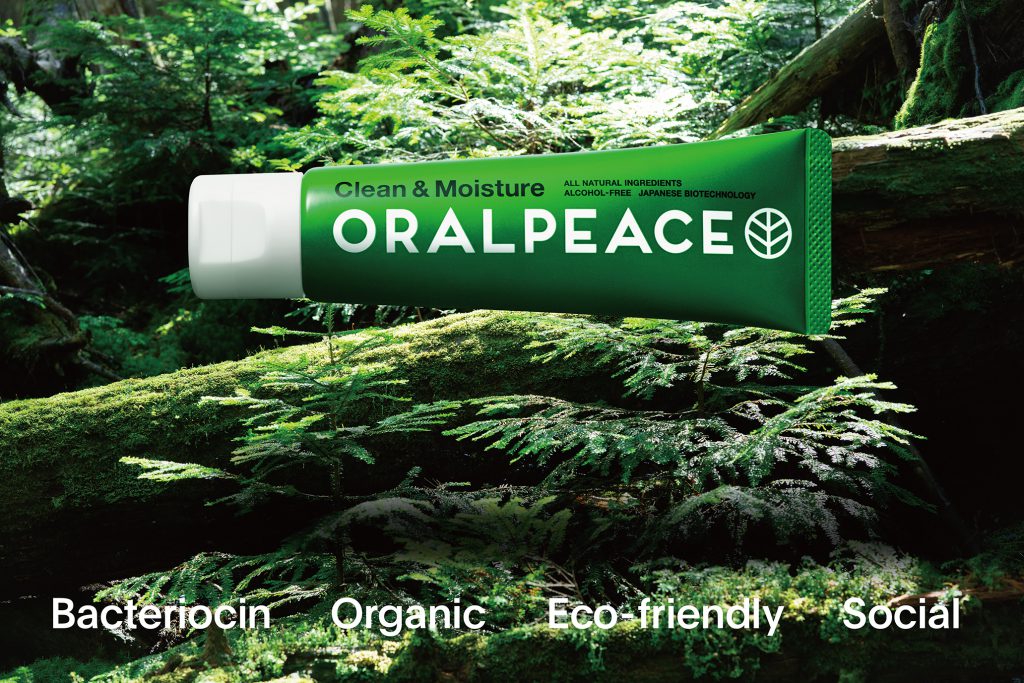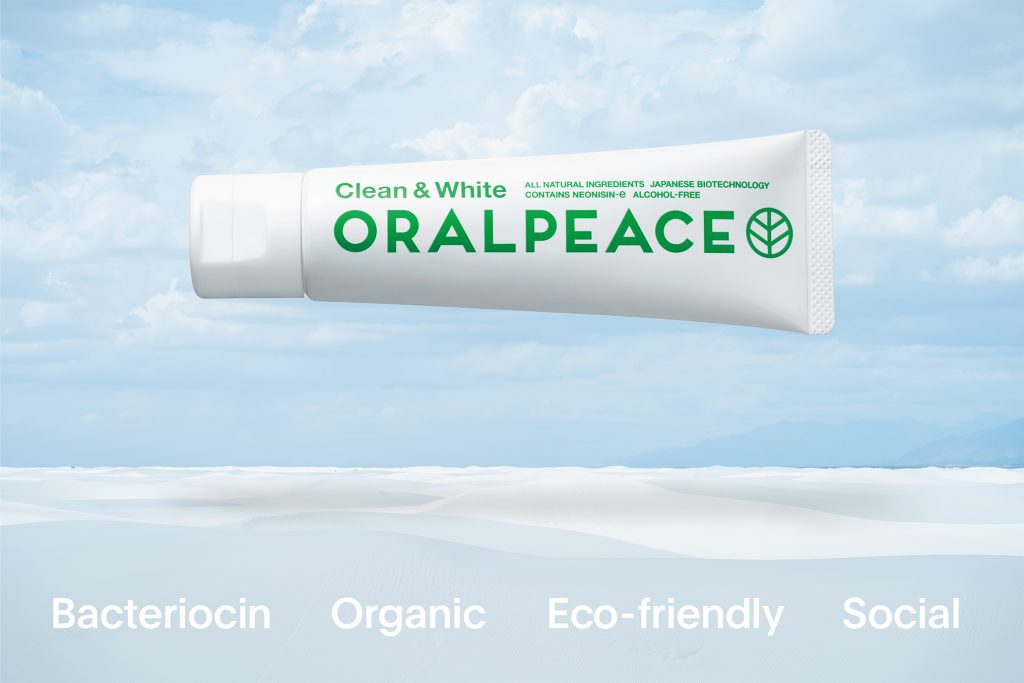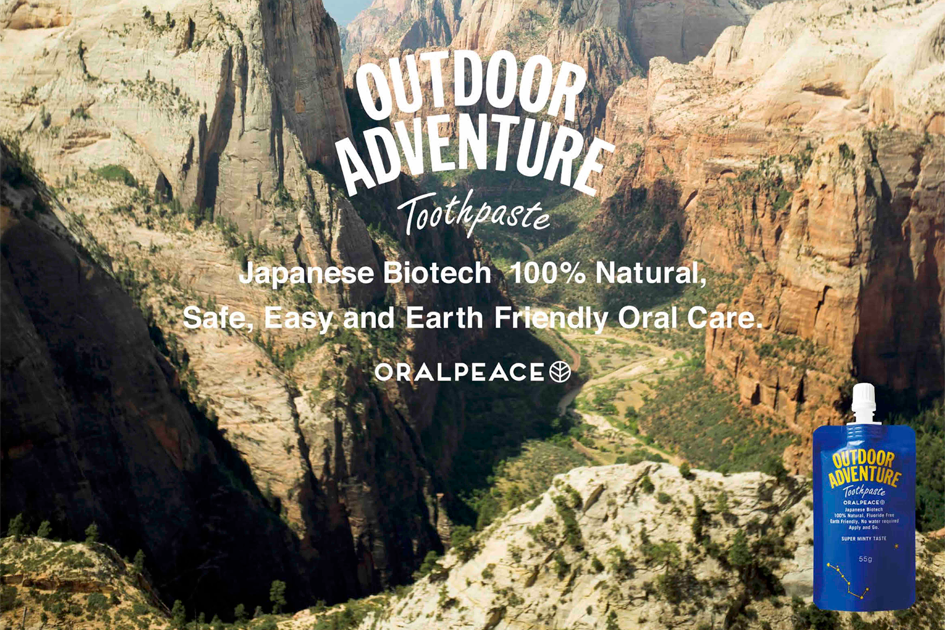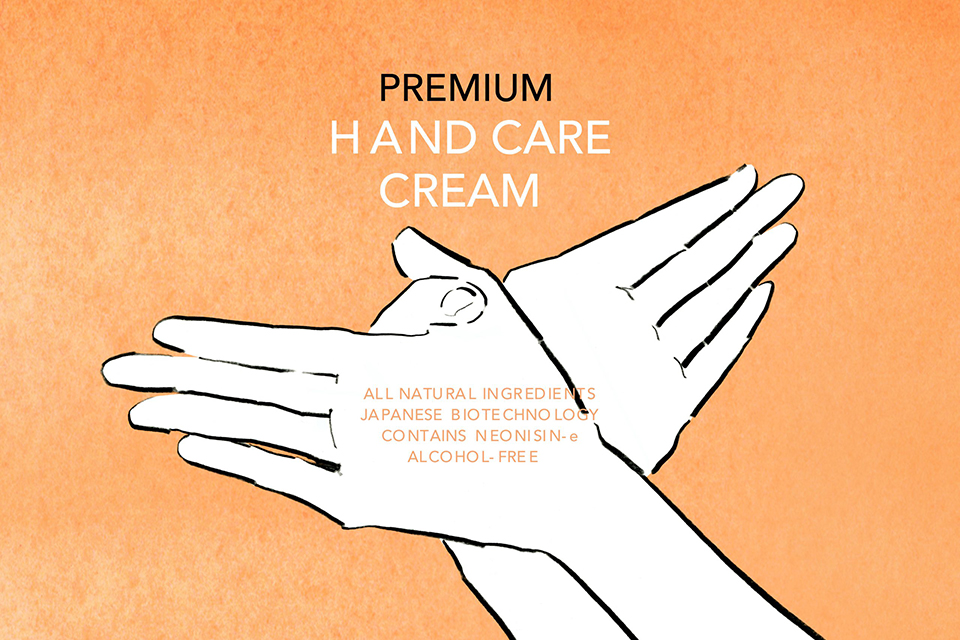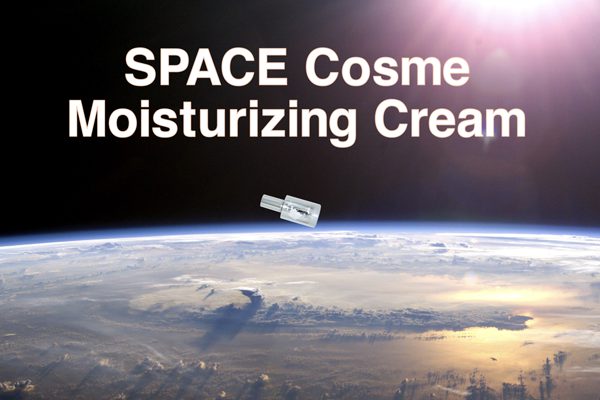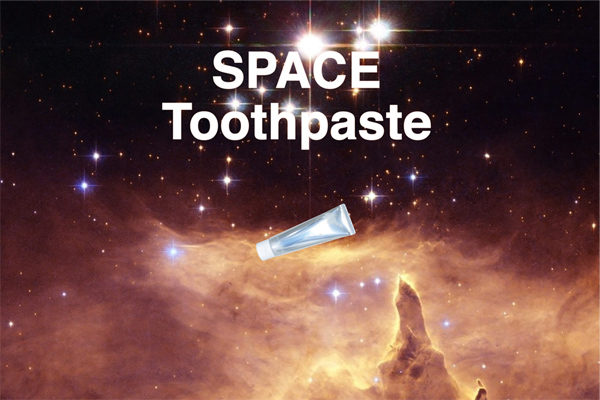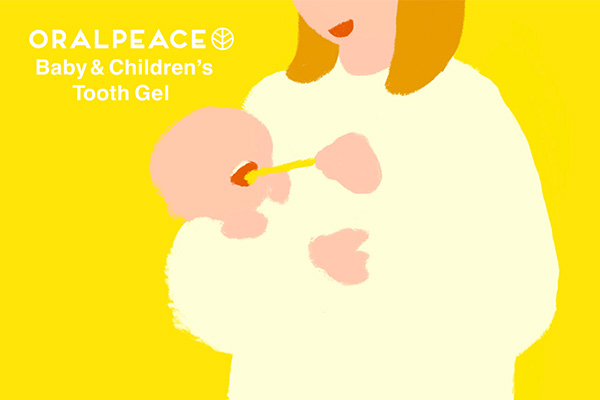Even in environments where mountaineering, camping, and water are precious. Clean your mouth without water. Oral care that is kind to the earth and the body.
Oralpeace is an oral care item that was originally developed mainly for elderly people requiring nursing care, fighting illnesses, infants, pregnant women, pets and other people who cannot gargle or spit, and families who do not want to ingest chemically synthesized ingredients. ..
A chemically synthesized toothpaste gel made from naturally derived food ingredients other than water.

The power of nature to approach fungi. Contains “Neonisin-e®︎ *”.
“Neonisin-e ® ︎ *” is an ingredient unique to Oral Peace that was developed by focusing on the excellent power of lactic acid bacteria peptides in nature. Despite being naturally derived, it firmly approaches the causative bacteria in the oral cavity. Brushing removes plaque, prevents tooth decay and bad breath and refreshes.
It is an oral care product that makes you feel good in the wilderness, both when you sleep and in the morning, and when you eat more delicious food, you can maintain your health and protect the environment.
FOR WHO?
PRODUCT FEATURES

What is “Neonisin-e®” ︎? Oral Peace’s unique patented ingredients
“Neonisin-e®︎ *” was created after a research period of more than 10 years in collaboration with the Graduate School of Agriculture, Kyushu University, the Graduate School of Medical and Dental Sciences, Kagoshima University, and the Department of Oral Diseases, National Longevity Medical Center. Antibacterial peptide (bacteriocin) preparation derived from plant-derived lactic acid bacteria. It is an ingredient unique to Oral Peace that evolved and developed from “Nisin A”, which was discovered in cheese in the United Kingdom in 1928 as an antibacterial substance that is safe for the human body. It is made from “Nisin A” produced by lactic acid bacteria found in Okara from Kyushu, plum extract from Kishu, and Damask rose essential oil from Bulgaria. It has been recognized for its excellent usefulness against various bacteria that cause oral problems, and is being used as an oral care product in a new era. Even if swallowed, it is decomposed and digested as an amino acid in the body, and even if it is exhaled to the natural world, it is rapidly biodegraded and is environmentally friendly. (Patent No. 5750552)
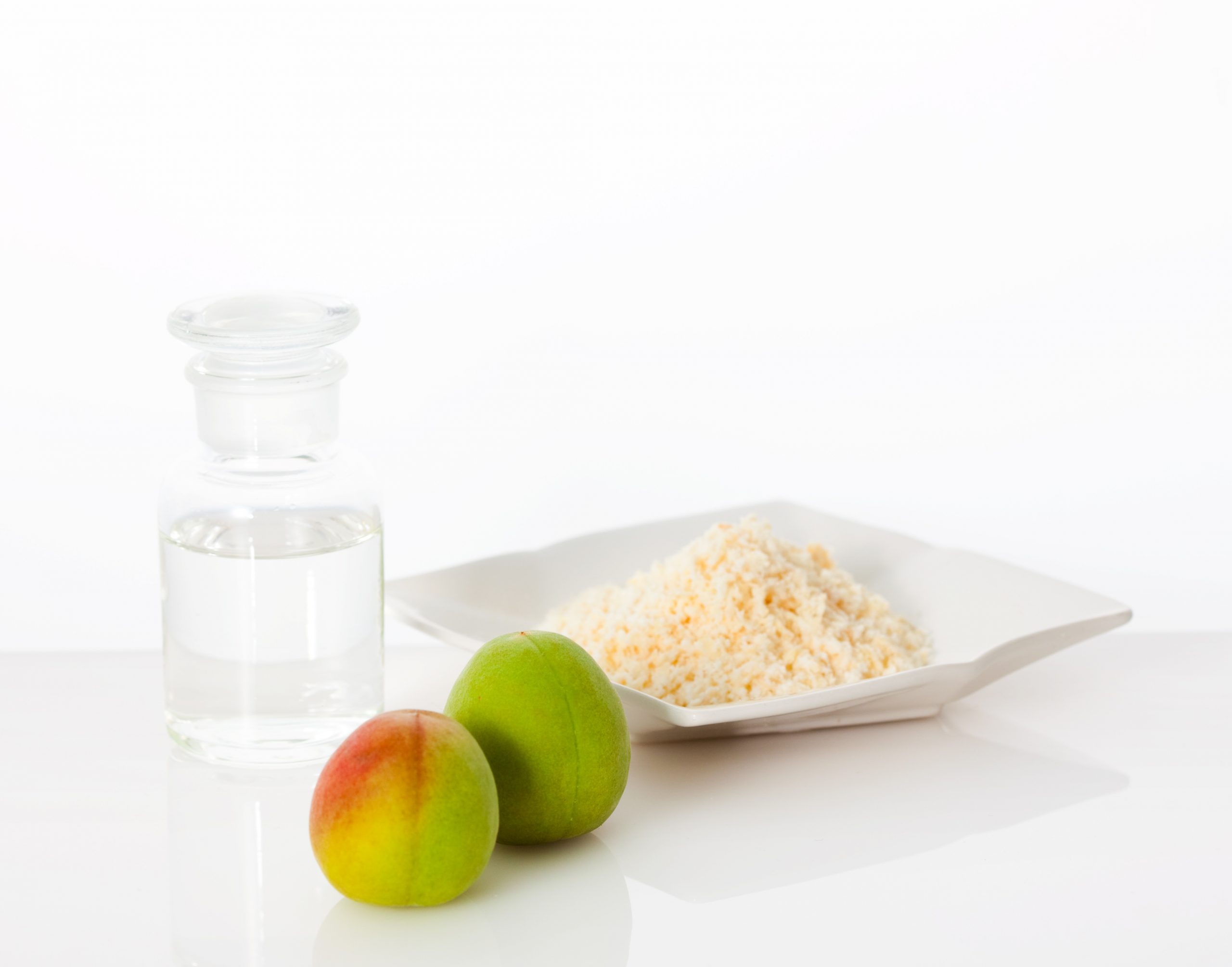
This product was developed through industry-academia collaboration research.
Lactic acid bacterium peptide preparation “Neonisin-e ®*” that approaches all oral trouble-causing bacteria, developed based on industry-academia collaboration with Kyushu University, Kagoshima University, National Center for Longevity Medical Research, etc. Formulation. Moreover, it is an oral care product that is made only from naturally derived food ingredients and is digested and biodegraded in the body and in the natural world.
Products and initiatives have won various public awards
Yokohama Business Grand Prix 2014 Best Award / Japan Venture Award 2015 Highest Award / Social Products Award 2015 Consumer Jury Award / Japan Foundation Social Innovator 2016 / Good Design Award 2017/2019 Japan Agricultural Society Technology Award
The project has been featured in various media
NHK International Broadcasting Station “Revolutionary Oral Care Products Protect Health” / NHK General Sakidori “Savior of the Aging Age Swallowable Toothpaste Gel” / Nikkei Channel “Protecting the Vulnerable from Illness! Oral Peace Challenge” Mainichi Shimbun “Safe Oral Care to Drink” Research on agents such as Kyudai and Shikadai “/ Nihon Keizai Shimbun” Outdoor gear useful in the event of a disaster “
It is used all over the world as a product created by Japanese technology.
Since its release, 500,000 oralpieces have been shipped (as of 2019), and not only are they used by Japanese people through hospitals, dental clinics, lifestyle shops, and welfare facilities nationwide, but they are also recognized around the world and the sea. Beyond that, it is also used by people in North America, Europe, Central and South America, Asia, etc.
We are working to solve social issues through our business
The Oralpeace Project is a social project in which more than 100 members from various fields, such as researchers, medical professionals, and creators, gather to challenge the income improvement of people with disabilities nationwide through the project. In addition, purchasing oral pieces will lead to job creation and income improvement for people with disabilities. We would be grateful if you could help us as a user and supporter.
ORALPEACE VISION
Researchers, clinicians, technicians, creators, etc. work together to develop environment- and human-friendly products, improve the oral environment from infants to the elderly around the world, and promote healthy life expectancy.
Solving social issues such as creating jobs for people with disabilities nationwide with low income through business, while aiming to reduce the cost of long-term care and the burden on long-term caregivers, which continue to increase by more than 9 trillion yen annually in Japan as the elderly age. It is also a social venture that is challenging.
We will expand this bio-social venture initiative from Japan, which represents the nation of the elderly, to the world while preserving the irreplaceable and beautiful nature.
Oralpeace Project

Product Line up
“Neonisin-e® *”, an outdoor toothpaste gel made from naturally derived ingredients
Clean your mouth even in a waterless field. With this one, the discomfort disappears and you can keep the refreshing feeling in your mouth, and it is also useful as a moisturizer in the mouth in highlands and dry areas. Easy care even without water as it is made of only naturally derived ingredients. Even if it is spit out in beautiful nature such as trails and waterside, it is biodegraded and leaves no footprint in the environment. A super mint toothpaste gel that can be used in all outdoor situations. Compatible with winter mountains that do not freeze even below -20 ° C. Double concentrated * type that realizes weight reduction of gears, eco-package specification that aims to minimize the use of plastic in consideration of light weight and protection of the global environment.
* Oralpiece ratio to other items
OUTDOOR ADVENTURE Toothpaste
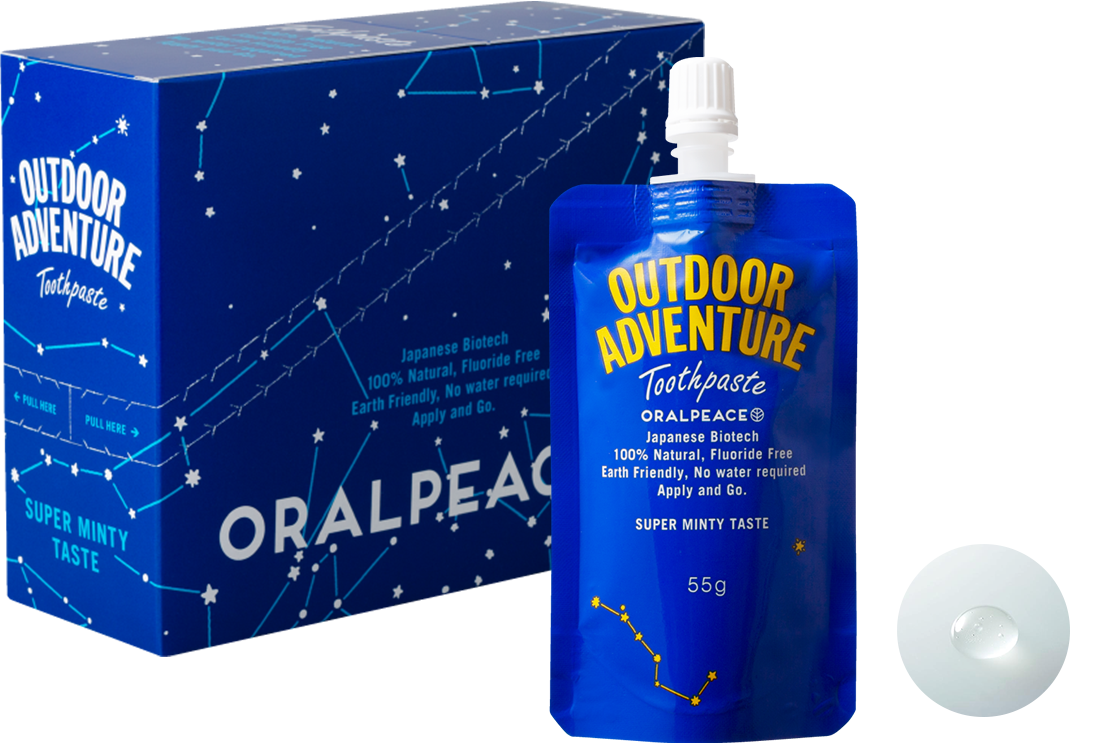
ingredients
Glycerin (moisturizer / sweetener, derived from palm palm), water, lactic acid bacterium culture extract (cleaning aid), xanthan gum (thickening agent, derived from corn), ume fruit extract (cleaning aid), caesalpinia spinosa gum (increased) Sticky agent, derived from legumes), peppermint oil (flavoring agent), spearmint oil (flavoring agent), damask rose flower oil (flavoring agent), menthol (cooling agent) * Cleaning aid
Designed by Noriteru Minezaki ((Studio))
The following ingredients are not used
ORALPEACE do not contain the following ingredients:
×Ingredients that are not approved for food that can be taken into the mouth
×Alcohol (ethanol, cause of dry mouth/avoidable for children)
×Petroleum-derived ingredients
×Chemical substances
×Forever Chemical (PFAS)
×Cyanide(potassium cyanide, etc., poisonous substance, substance not permitted for food, substance prohibited from being released into the environment in ppm units)
×Potassium thiocyanate(Thyroid side effects, hazardous substance, substance prohibited from being mixed into food or released into the environment in ppm units, regulated by the U.S. Environmental Protection Agency in 2011, regulated by the European Union in 2014, and regulated by the Japan Ministry of Health, Labor and Welfare for hypothyroidism in 2021, the Japan Ministry of the Environment will classify it as an endocrine organ disruptor and prepare for regulations.)
×Hydrogen peroxide(deleterious substance, residual unlicensed substance in food, prohibited in Japanese toothpaste products in ppm units)
×Enzymes such as lactoperoxidase and glucose oxidase that cause a chemical reaction with hydrogen peroxide and thiocyanate in the oral cavity to generate cyanide and sterilize E. coli(Thyroid side effects, Japan Ministry of Health, Labor and Welfare and Ministry of the Environment impact risk)
×Potassium iodide (Iodine, disinfectant, risk of side effects such as iodine poisoning and thyroid dysfunction)
×Formaldehyde (poisonous substance, bactericidal agent, there are cases where it is added to imported products in ppm units for antibacterial purposes due to carryover of preservatives from raw materials)
×Synthetic fungicides that disrupt the intestinal flora, which is the source of immunity, and are toxic in nature when released into the environment
×Synthetic disinfectants such as cetylpyridinium chloride (also known as cetylpyridinium chloride, CPC), benzethonium chloride, benzalkonium chloride, chlorhexidine gluconate, IPMP (isopropylmethylphenol), triclosan, methyl salicylate, lauroylsarcosine salt (LSS), etc.
×Chlorine, chlorine dioxide (CIO2), sodium chlorite, sodium hypochlorite, chlorine gas, etc. (deleterious substances, dangerous substances, bleach, pool disinfectants)
×Na hydroxide/K hydroxide (deleterious substance, caustic soda/potassium, strong alkali, biohazardous, corneal damage observed with 2% solution, prohibited substance remaining in food)
× Strong alkaline electrolyzed water (although it is water, it is strongly alkaline and there is a risk of damaging the oral cavity and visceral mucosa and diluting stomach acid if swallowed accidentally, so it is not used for oral care in medical care settings)
×Water-soluble synthetic polymers such as carbomer, sodium polyacrylate, and hydroxyethyl cellulose (liquid microplastics, may impede skin breathing, and are difficult to decompose in the environment as nanoplastics, posing risks to seafood and the body)
×Fluoride (European Union suggests an impact on children’s IQ and reproductive function; in the United States, the safe exposure limit for fluoride is 0.12 mg/kg body weight/day)
×Titanium dioxide, TI dioxide, titanium oxide, TI oxide (coloring agent, bleach, suspected of carcinogenicity, French government has banned its inclusion in food from 2020)
×Phosphorus (phosphates such as polyphosphoric acid, metaphosphoric acid, pyrophosphoric acid, bleach)
×Aspartame (artificial sweetener, WHO suggested it may be carcinogenic in 2023)
×Artificial sweeteners such as sorbitol, sucralose, maltitol, erythritol, and saccharin sodium (effects on intestinal bacteria, etc.)
×Xylitol (effect on intestinal bacteria)
×Paraben (paraoxybenzoic acid ester, methylparaben, butylparaben)
×Phenoxyethanol (synthetic preservative, substance not permitted for food)
×Sodium benzoate (synthetic preservative)
×Sorbic acid potassium (synthetic preservative)
×Pentylene glycol (synthetic preservative)
×Glycine (preservative/food additive chemically synthesized from formaldehyde and hydrogen cyanide)
×Poly-ε-lysine (polylysine, an antibiotic analog produced by fungi-like actinomycetes, preservative and food additive)
×Synthetic surfactants and foaming agents such as sodium lauryl sulfate, lauryl glucoside, cocamidopropyl betaine, and sodium cocoyl glutamate that pose risks of swallowing and environmental pollution.
×Soap base, soap such as coconut oil fatty acid K, olive fatty acid K, etc., foaming agent
×Abrasives (stones, microplastic beads, mud, salt, etc.) that can be swallowed, accumulate in the gums, or abrade too much enamel and risk hypersensitivity.
×Calcium carbonate (Ca carbonate, large-particle abrasive, limestone powder, powder for drawing white lines on playgrounds, raw material for chalk), zeolite (zeolite), sodium bicarbonate (baking soda), coral powder, shells, Abrasives (compound, stone powder, etc.) such as mud (clay, montmorinite), charcoal, microbeads (plastic), etc.
×Large amounts of hydroxyapatite (risk of absorbing and sterilizing microorganisms in septic tanks and sewage treatment plants when discharged into the environment; risk of environmental pollution when discharged into the natural world)
×Strong synthetic fragrances and chemical fragrances that can disguise signs of illness such as bad breath (treatment of the affected area is necessary for health)
×Chemical substances whose names are hidden and only written as “fragrances” and “preservatives” (medicinal and quasi-drugs are not required to list all ingredients, and display names and INCI names can be hidden)
×Synthetic fragrances and flavors such as grape and cola made from chemicals
×Solubilizers such as PEG (polyethylene glycol) and propanediol
×BG (butylene glycol) ×PG (propylene glycol)
×EDTA-2Na × etidronic acid × phytic acid × nanoparticles
×Synthetic colorants made from petroleum tar raw materials such as Blue No. 1 and Yellow No. 2
×Metals such as copper and silver, heavy metals, heavy metals
×Poisonous components of animals and plants (natural poisons) × Aconite (alkaloids)
×Essential oils and resins with distilled and concentrated plant toxicity ×Tea tree essential oil
×Hinokitiol (teratogenic risk, avoid for pregnant women and girls)
×Pine tar × Japanese cedar resin × Mastic resin × Eucalyptus essential oil × Wintergreen essential oil × St. John’s wort essential oil
×Yucca Schidigera extract (complex mixture of compounds, 2021 EU/European Food Safety Authority has determined that the effects of triterpenoid saponin and steroid saponin mixture (thyrotoxicity and male reproductive toxicity), serious skin and eye (suggests irritation and effects on aquatic organisms)
×Indigestible dextrin × Catechin × Tea leaves × Caffeine × Salt/Sea salt
×Insects, larvae, caterpillars, insect eggs, insect-derived raw materials × Honey, propolis × Saliva × Body fluids × Feces
×Animal-derived materials that sacrifice the tiny lives of other animals, such as bird eggs and animal placentas
×Animal-derived lactic acid bacteria (lactic acid bacteria derived from human/animal feces, intestinal tract, oral bacteria, dental plaque, etc. are not used)
×Lactic acid bacteria itself (no combination of live bacteria or dead bacteria, no evidence data on the immediate effect of lactic acid bacteria itself on oral bacteria)
×Limited natural biological raw materials such as corals in the marine environment
×Chemical substances that are toxic to the natural environment and biological ecosystems in the rivers and soil where they are discharged, and that indirectly affect human health from edible seafood and agricultural products.
×Chemical substances that the World Health Organization is considering regulating in the future due to their negative effects on the human body and the environment
*When purchasing products for the mouth of children, family members, or patients, please be sure to check the “all ingredients” (all ingredients contained in each product) of each product before making your selection. We recommend it.
*Also, some Internet search services are capable of various information manipulations such as SEO to prevent consumers from knowing the truth, so the same content can be used on new AI question answering services, etc. We encourage you to investigate the truth for yourself.
* Cleaning aid
How to use
OUTDOOR ADVENTURE
Put a small amount on a toothbrush and brush it to prevent tooth decay and bad breath in the mountains. You can safely spit it out in beautiful nature and septic tanks.

If you don’t have precious water or have trouble, you can use it without a toothbrush. Keeps the corners between teeth clean, which is difficult to reach by brushing. For highlands and dry areas where the mouth becomes dry, and for a change of mood.

MEDIA INFORMATION
Other videos and articles can be viewed on the Web.

